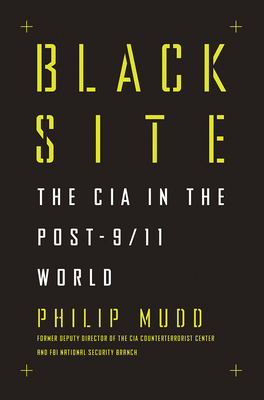
description
1
Heated debates about torture were later ignited in 2014 after the US Senate published a report of the Program, detailing the CIA's use of "enhanced interrogation techniques" to draw information from detainees. The report, Mudd posits, did not fully address key questions: How did the officials actually come to their decisions? What happened at the detention facilities--known as "Black Sites"--on a day-to-day basis? What did they look like? How were prisoners transported there? And how did the officers feel about what they were doing?
Black Site seeks answers to these questions and more, first by examining pre-9/11 Langley, when the CIA was tasked with collecting, disseminating, and analyzing information related to overseas events. Mudd argues that September 12, 2001, marked an operational revolution, as officials suddenly felt the weight of protecting a nation from a second wave of attacks inside the United States. Re-creating the incredibly tense atmosphere of the time, Mudd reveals that many officials felt an unshakable personal responsibility to thwart another attack.
Based on interviews from dozens of officials--many of whom have never spoken out before-- Black Site illuminates how the Agency quickly stepped into the process of organizing a full-blown interrogation program. Mudd offers a deeper understanding of how the enhanced interrogation techniques were developed and how intelligence professionals prepared to talk to the world's most hardened terrorists. With careful detail, he takes us through the process of each legally approved technique, including waterboarding.
As compelling as it is revelatory, Black Site shows us the tragedy and triumph of the CIA during its most difficult days.
Heated debates about torture were later ignited in 2014 after the US Senate published a report of the Program, detailing the CIA's use of "enhanced interrogation techniques" to draw information from detainees. The report, Mudd posits, did not fully address key questions: How did the officials actually come to their decisions? What happened at the detention facilities--known as "Black Sites"--on a day-to-day basis? What did they look like? How were prisoners transported there? And how did the officers feel about what they were doing?
Black Site seeks answers to these questions and more, first by examining pre-9/11 Langley, when the CIA was tasked with collecting, disseminating, and analyzing information related to overseas events. Mudd argues that September 12, 2001, marked an operational revolution, as officials suddenly felt the weight of protecting a nation from a second wave of attacks inside the United States. Re-creating the incredibly tense atmosphere of the time, Mudd reveals that many officials felt an unshakable personal responsibility to thwart another attack.
Based on interviews from dozens of officials--many of whom have never spoken out before-- Black Site illuminates how the Agency quickly stepped into the process of organizing a full-blown interrogation program. Mudd offers a deeper understanding of how the enhanced interrogation techniques were developed and how intelligence professionals prepared to talk to the world's most hardened terrorists. With careful detail, he takes us through the process of each legally approved technique, including waterboarding.
As compelling as it is revelatory, Black Site shows us the tragedy and triumph of the CIA during its most difficult days.
member goods
No member items were found under this heading.
Return Policy
All sales are final
Shipping
No special shipping considerations available.
Shipping fees determined at checkout.







